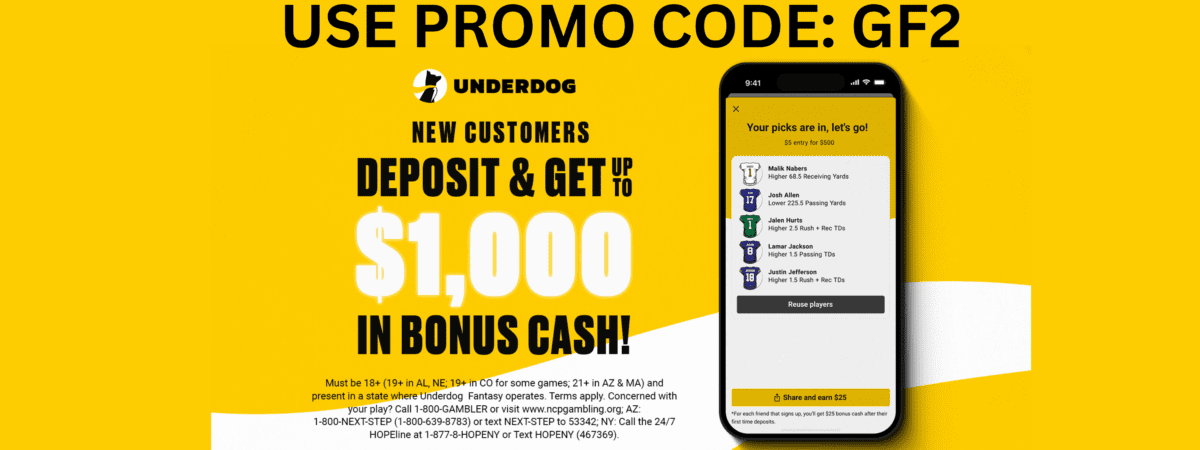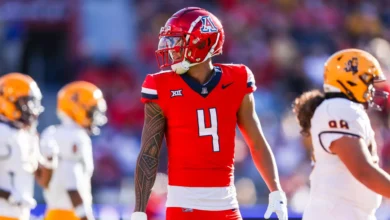The Great Eight: Tight End Theory Crafting
In every draft, there is always one. “I’m waiting on tight end, just look at Darren Waller last year!”. The argument is not wrong. Robert Tonyan and Logan Thomas landed with ADPs outside of the top 50 coming into the season and have both turned in top 6 TE seasons. Waller is the poster child for this theory. But the argument is flawed, as anyone who bet on Blake Jarwin, Jack Doyle, or Chris Herndon in their draft and has played tight end roulette weekly can attest.
Embed from Getty ImagesStrategies that fade positions are nothing new, “Zero RB”, “Late Round QB”, “Robust RB” are well established and have been around for years. I believe they all have merit. No position steps into points with an opportunity like running back, QBs touch the ball on every play and can effectively be streamed outside of Superflex and a passable WR group can be formed via late-round picks.
There are a couple of inherent problems with the late-round tight end. The first is one of roster construction. A “Zero RB” team can devote their bench to high upside running backs who only need an injury to swing leagues. QBs who land in stream-able matchups are available weekly assuming your league-mates do not foolishly backup Patrick Mahomes. But outside of deeper leagues, it’s extremely difficult to roster more than two tight ends due to the low ceiling on the position limiting flex utility. You are already limiting your odds and placing a bet that you will be right with one or two picks, vs seven or eight running backs depending on how extreme you get with a zero RB approach. Add in into it more likely than not most of your league mates are also hoping to land the next Waller, stashing and grinding the position too.
Embed from Getty ImagesThe second is position volatility. Earlier I mentioned Tonyan and Thomas as sitting in the top six for total points during the season. However, from weeks 2 through 11, Thomas averaged ~9.9 PPR points, good for TE 14 on a per-game basis. Tonyan’s point total on the season is higher, but so are his peaks and valleys as weeks 6 through 10 he averaged 6.28 PPR ppg, good for TE ~30 on a per-game basis. Simply put, there is no position more touchdown-dependent than the TE and no player exemplifies that more than Tonyan, who can attribute 37% of his points to his 10 touchdowns. Contrast that to Evan Engram, the biggest non-injury disappointment at the position, with just one touchdown on the season placing him at TE14. With just moderate touchdown production, Engram would be in the top 6 conversation and viewed more in line with his preseason ADP.
So how do we put this into actionable information? If you looked at championship rosters you are going to see a lot of Travis Kelce and Darren Waller. For good reason, they are well in front of the third-place Tonyan, averaging over 5+ ppg over the field (Kelce’s is an extreme, averaging 9 ppg over the 3rd place Tonyan). However, there’s simply too much opportunity cost to grab Kelce over the running backs that populate the top of the draft. There is more art than science in the correct draft spot to grab one of the TEs, and while I’ve been a long time “Kelce in the 1st” truther, I’m a firm believer in tiers. Specifically, when it comes to tight ends, I want to grab the last one.
Embed from Getty ImagesThe key metric I use to identify my “draftable” group is targets, with 6 targets per game standing out as a dividing line at TE. At 6 targets per game, the tier identifies itself as Kelce, Waller, George Kittle, Engram, Hunter Henry, T.J. Hockenson, Thomas, Eric Ebron, Noah Fant, Mark Andrews, Dallas Goedert, and Zach Ertz. None of those names come as a shock.
I’ve previously mentioned Thomas’s volatility, his targets are buoyed by a week 15 performance where he saw 15, the third-highest total on the season. That outlier becomes even more extreme when we see Kelce and Waller are the only two TEs with 12 target games. Removing that outlier bumps Thomas under our magic number.
Engram and Ebron are two other names on our list and you will find their names on the top of another list: drops. I’ve mentioned touchdown regression as a major factor in Engram’s standing, but the drops and Ebron’s age make these legitimate fade candidates in redraft, but Engram’s dynasty owner could open a buy-low window due to this season. The talent is there with him if you want to take the chance. The other name of concern is Zach Ertz. He’s long been a reliable starter at the position, but the stories this summer about a stalled contract negotiation were an obvious red flag, and absent him landing in a very favorable situation via free agency, he stands as a fade too.
We are left with “The Great Eight”. That splits us into two tiers: The gold standards of Kelce, Kittle, Waller. And the young guns of Hockenson, Fant, Andrews, Goedert, Henry. For dynasty purposes, keep your eyes on the second group. Given their high draft pedigrees and current roles in the offenses, the “next Kelce” is very likely in that group and the acquisition price is likely never to be lower than this offseason. If one of their owners puts them on the block, do not be afraid of an aggressive acquisition price. Kyle Pitts deserves a mention for dynasty purposes, there are few tight ends as hyped coming in and what he did to SEC defenses is eye-opening, but realize there’s typically a steep learning curve to fantasy relevance for young TEs.
Always keep looking for “The Next Waller”, but the next time someone comes to you with “late tight end” take note and make sure not to miss one of “The Great Eight”.
ATTN Dynasty Commissioners: Do you want to do something cool for your league? How about a 1-hour live show dedicated to YOUR league? Team-by-team breakdowns, rankings, and more. For details and to book a show, visit: GoingFor2.com/plp.






